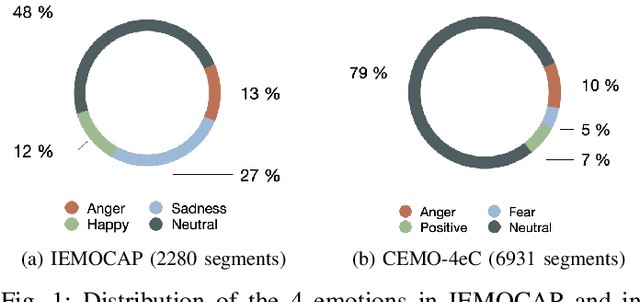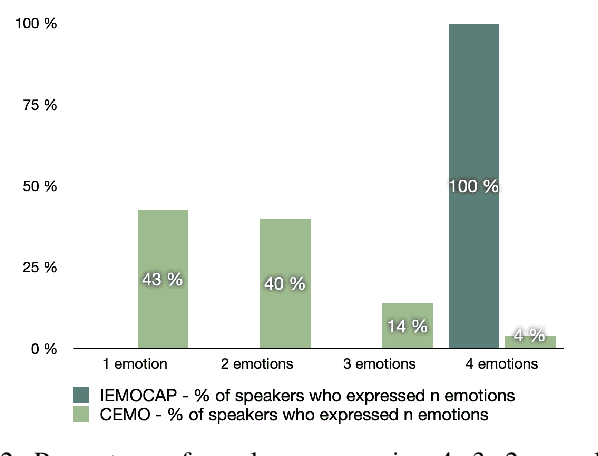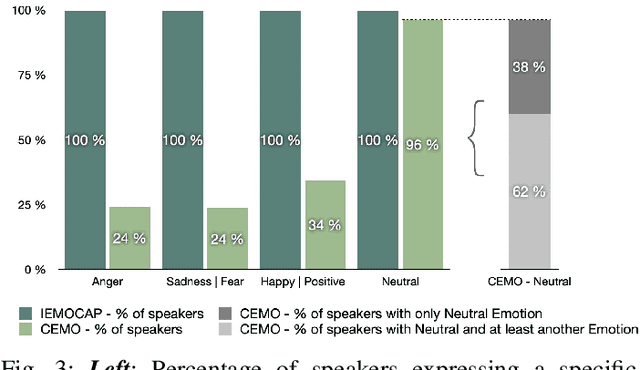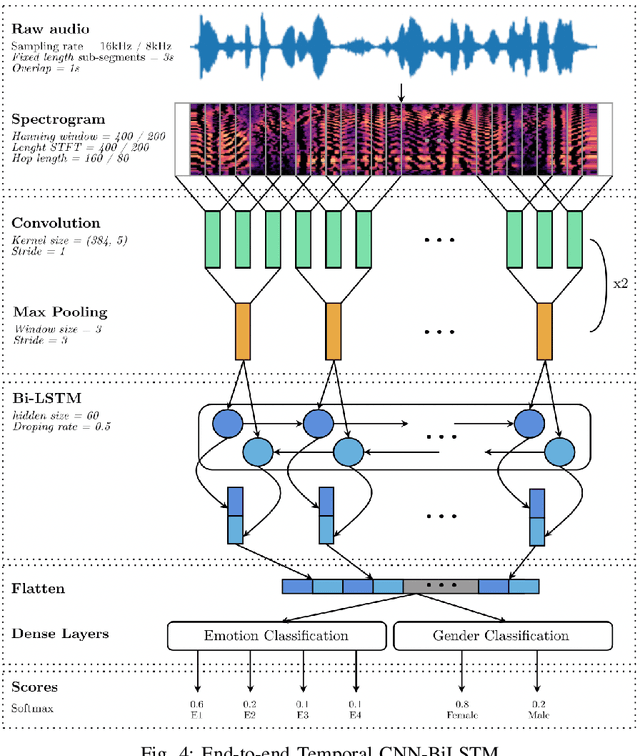Lori Lamel
LISN, CNRS
Multiscale Contextual Learning for Speech Emotion Recognition in Emergency Call Center Conversations
Aug 28, 2023



Abstract:Emotion recognition in conversations is essential for ensuring advanced human-machine interactions. However, creating robust and accurate emotion recognition systems in real life is challenging, mainly due to the scarcity of emotion datasets collected in the wild and the inability to take into account the dialogue context. The CEMO dataset, composed of conversations between agents and patients during emergency calls to a French call center, fills this gap. The nature of these interactions highlights the role of the emotional flow of the conversation in predicting patient emotions, as context can often make a difference in understanding actual feelings. This paper presents a multi-scale conversational context learning approach for speech emotion recognition, which takes advantage of this hypothesis. We investigated this approach on both speech transcriptions and acoustic segments. Experimentally, our method uses the previous or next information of the targeted segment. In the text domain, we tested the context window using a wide range of tokens (from 10 to 100) and at the speech turns level, considering inputs from both the same and opposing speakers. According to our tests, the context derived from previous tokens has a more significant influence on accurate prediction than the following tokens. Furthermore, taking the last speech turn of the same speaker in the conversation seems useful. In the acoustic domain, we conducted an in-depth analysis of the impact of the surrounding emotions on the prediction. While multi-scale conversational context learning using Transformers can enhance performance in the textual modality for emergency call recordings, incorporating acoustic context is more challenging.
Exploring Attention Mechanisms for Multimodal Emotion Recognition in an Emergency Call Center Corpus
Jun 12, 2023



Abstract:The emotion detection technology to enhance human decision-making is an important research issue for real-world applications, but real-life emotion datasets are relatively rare and small. The experiments conducted in this paper use the CEMO, which was collected in a French emergency call center. Two pre-trained models based on speech and text were fine-tuned for speech emotion recognition. Using pre-trained Transformer encoders mitigates our data's limited and sparse nature. This paper explores the different fusion strategies of these modality-specific models. In particular, fusions with and without cross-attention mechanisms were tested to gather the most relevant information from both the speech and text encoders. We show that multimodal fusion brings an absolute gain of 4-9% with respect to either single modality and that the Symmetric multi-headed cross-attention mechanism performed better than late classical fusion approaches. Our experiments also suggest that for the real-life CEMO corpus, the audio component encodes more emotive information than the textual one.
* 5 pages, 2 figures, 4 tables
End-to-End Speech Emotion Recognition: Challenges of Real-Life Emergency Call Centers Data Recordings
Oct 28, 2021



Abstract:Recognizing a speaker's emotion from their speech can be a key element in emergency call centers. End-to-end deep learning systems for speech emotion recognition now achieve equivalent or even better results than conventional machine learning approaches. In this paper, in order to validate the performance of our neural network architecture for emotion recognition from speech, we first trained and tested it on the widely used corpus accessible by the community, IEMOCAP. We then used the same architecture as the real life corpus, CEMO, composed of 440 dialogs (2h16m) from 485 speakers. The most frequent emotions expressed by callers in these real life emergency dialogues are fear, anger and positive emotions such as relief. In the IEMOCAP general topic conversations, the most frequent emotions are sadness, anger and happiness. Using the same end-to-end deep learning architecture, an Unweighted Accuracy Recall (UA) of 63% is obtained on IEMOCAP and a UA of 45.6% on CEMO, each with 4 classes. Using only 2 classes (Anger, Neutral), the results for CEMO are 76.9% UA compared to 81.1% UA for IEMOCAP. We expect that these encouraging results with CEMO can be improved by combining the audio channel with the linguistic channel. Real-life emotions are clearly more complex than acted ones, mainly due to the large diversity of emotional expressions of speakers. Index Terms-emotion detection, end-to-end deep learning architecture, call center, real-life database, complex emotions.
 Add to Chrome
Add to Chrome Add to Firefox
Add to Firefox Add to Edge
Add to Edge